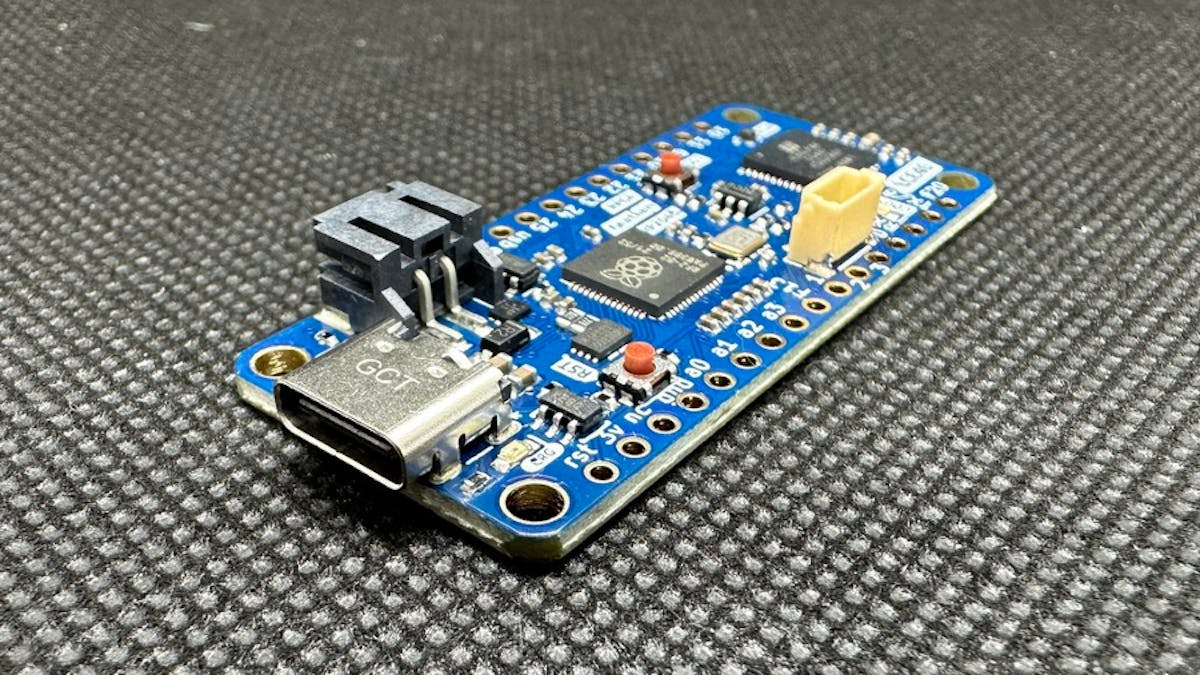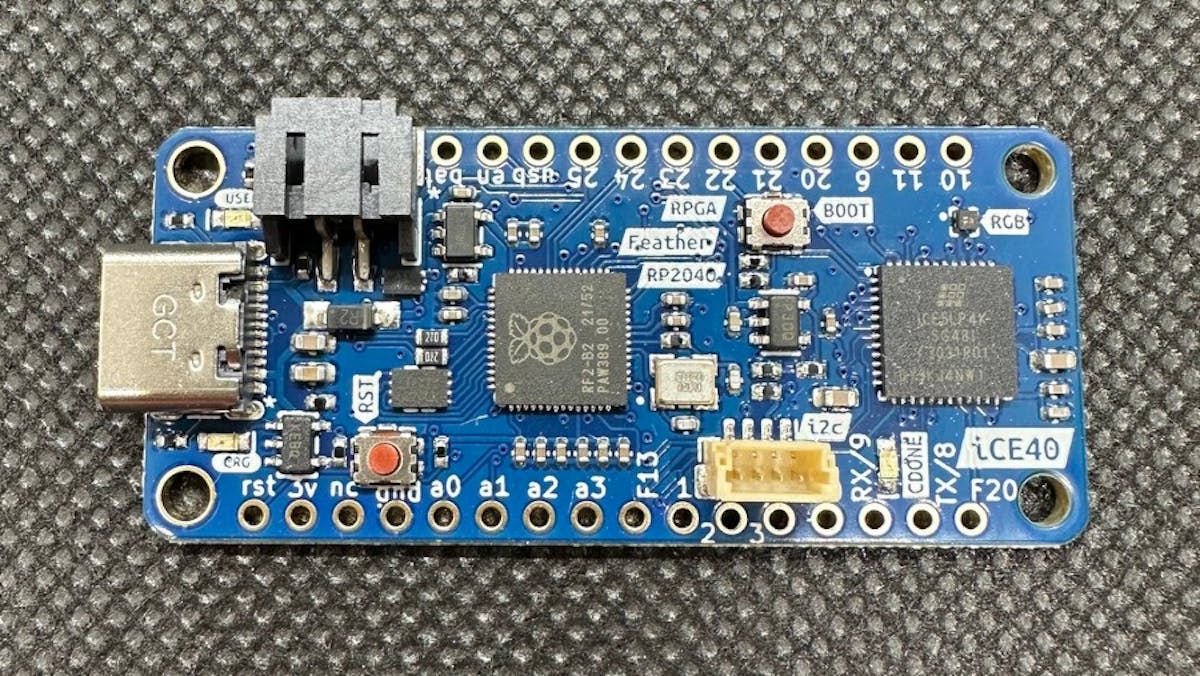Oak Development Pairs a Lattice iCE40 FPGA with a Raspberry Pi RP2040 for the RPGA Feather
Built in the familiar Feather form factor, this board combines microcontroller and FPGA capabilities in one.

Oak Development Technologies has launched a new Feather-format development board for the FPGA enthusiast — and this one pairs a Lattice Semiconductor iCE40 FPGA with the popular Raspberry Pi RP2040 dual-core microcontroller: the RPGA Feather.
"What better way to enjoy a Raspberry Pi RP2040 than to pair it with an iCE40 FPGA," Oak Development Technologies' Seth Kerr asks, rhetorically, in reference to his latest creation. "[This] iCE40 FPGA provide a small but capable accessory to your favorite project without the hassle of figuring out the wiring and which pins to hook up!"

This is far from Oak's first Feather-format FPGA design. Back in February 2023 the company unveiled the IcyBlue Feather, which played host to a Lattice Semi iCE5LP4K; in April this year it was upgraded to a V2 design that added USB Type-C connectivity. The Lattice FeatherWing, meanwhile, was designed to add an iCE5LP4K to existing Feather-format projects — while the new RPGA Feather goes back to being a standalone board once more.
On the FPGA side of the equation, the RPGA Feather uses the familiar Lattice iCE5LP4K, delivering 3,520 look-up tables (LUTs) and a total of 80kb of block ram (BRAM) plus dedicated hardware I2C and SPI blocks. On the microcontroller side, the familiar Raspberry Pi RP2040 delivers two Arm Cortex-M0+ cores running at 133MHz stock, 264kB of static RAM (SRAM), and clever programmable input/output (PIO) blocks capable of running state machines separately to the CPU cores.

The board includes a USB Type-C connector for programming and power, which can charge an optional lithium-polymer battery. There are eight direct pin connections from the FPGA to the microcontroller, Kerr notes, with a further jumper-selectable as either being connected or left as free input/output pins for the FPGA alone. There's an on-board RGB LED connected to the FPGA, and 2MB of QSPI flash for the RP2040.
The RPGA Feather is available to order from the Oak Development Technologies Tindie store at $46.95; hardware design files and software source code are available on the project's GitHub repository under the permissive MIT license.
Freelance journalist, technical author, hacker, tinkerer, erstwhile sysadmin. For hire: freelance@halfacree.co.uk.

